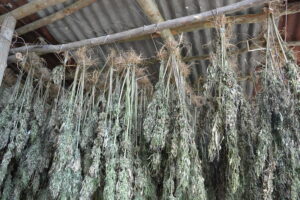In his book How Europe underdeveloped Africa, Pan-African, historian, Walter Rodney defines culture, “A culture is a total way of life. It embraces what people ate and what they wore; the way they walked and the way they talked; the manner in which they treated death and greeted the newborn.”
From The Zimbabwe Mail by Grace Kwinjeh July 1 2021
Before the brutal invasion in the name of Western civilisation, by Christopher Columbus and others, indigenous people of the world we are living their lives, enjoying their cultures uninterrupted. The violent entry into the communities in Africa, Asia, and South America, disrupted the history of whole indigenous societies through pillaging, massacre, and enslavement.
That history of invasion still remains vigorously contested in contemporary politics, as indigenous people seek to set the record of their individual stories straight while claiming back their stolen heritage.
On the small island of St Vincent And Grenadines, the African tree trunk drum and cannabis have for centuries been central in the resistance against colonial invasion and continued defiance against it after Independence. These have been important mobilisation tools in stimulating social consciousness on freedom, for the oppressed classes often leading to violent clashes with the colonising classes.
That is why as we reflect on the history, a conversation on the criminilisation and racialisation of cannabis the SVG offers an important case study for any radical progressive.
While the role of the drum has fallen, cannabis remains an important tool for social transformation.
Consequently, there is a context to understanding the real anxiety against cannabis growing that market forces as fronted by key Western countries have nothing to do with dubious moral justifications as they so wish to espouse. Rather these are part of a historic response of invasion and destruction on a former colony’s sovereignty and ability to sustain herself, leading to the US-funded military invasions destroying whole plantations.
Operation Weedeater under the Clinton administration, which targeted and destroyed weed farms, against farmers who had already lost their sources of income in the banana plantations, due to new WTO regulations. More cynical was the attempt to then give more aid in exchange for destroying cannabis farms, no mention about reparations for centuries of slavery.
This violence against the farmers has to be understood within a broader socio-historical context, it did not happen in a vacuum.
Further exposing deception in particular by Western capitalist interests of their seeming goodwill in destroying indigenous ganja farms. I argue that this has served as a camouflage to a more sinister violent response to the struggle by social movements for political and economic emancipation whose ideas are rooted in eradicating racial capitalism.
In this regard, a unique, yet inspiring story unfolds in the small Caribbean island of SVG. Liberation hero, Joseph Chatoyer would lead a momentous and unique resistance to the British military invasion in 1762.
Now it should be understood there was a history and a people before the colonialists, these were divided into Black Caribs and Yellow Caribs, the Garifuna, and Kalinagos who occupied separate sides of the Island.
In this historical anecdote after a few years of massive resistance to their invasion, the British military, according to some narratives had to use unorthodox methods to lure and assassinate the great king Chatoyer in 1772. Eventually taking over the islands famous for black gold, rich volcanic soils.
After the ‘victory’ the British and French still fearful of the Garifuna’s reorganising themselves and taking over their land captured them, and ‘deported’ 5000 to Honduras.
This background of being conquered by the Garifuna people fueled paranoia and conclusions about the mystic concerning the ‘black Caribs’, the use of magical powers, of which cannabis, the drum, and the church, in particular, the Shaker Baptists became prime targets for violent persecution.
Fast Forward
It was a day in May 1973, in a confrontation between the colonial administration and local Vincentians, at which Black Power leader and pioneer of the cannabis trade, Junior Spirit Cottle is shot in the throat. A formidable movement had emerged uniting all the groups (indigenous people, and those brought in as slaves.) that were marginalised, suffering deprivation under the status quo.
The fires of revolution were burning wild throughout the world from the Caribbeans, the United States to Africa, further powered by musical legends who included Bob Marley. The Rastafari movement became a powerful spiritual and political force for the movements globally, offering new consciousness for the black man to liberate himself.
In Rastafarianism ganja is smoked for medicinal, meditation, and healing purposes, an ancient tradition passed down during the days of slavery from indentured east Indians.
To date, two decades later, the bullet remains lodged in Spirit’s throat, a reminder of the brutal cruelty, he suffered at the hands of that very system which together with others, he still fights. A system that manifests itself in the contradictions found in the construction of the post-colonial state, questioning the problems caused by capitalism this time in the area of agroecology and the growing of cannabis.
Building a nexus on why cannabis, for spiritual and economic reasons is at the core of this fight, as the social movements continue to build resistance against capitalist exploitation.
Consequently, the historical progression, in the resistance from the days of slavery to the contemporary times needs to be understood within that wider context of total liberation and victory over poverty.
On the fateful Mayday 1973, angry colonialists would descend into a seemingly bizarre rampage, targeting the Drum Movement members, destroying their drums, in a fit of anger slashing them into pieces. The Black Power movement in the Caribbean had revived the use of the African tree trunk drum as part of wider cultural consciences for the oppressed classes.
Global capitalist oppression may seem all-powerful and overwhelming, but it is driven by instability, anxiety, and fears, which leads to paranoia.
Fear of the unknown the mystic the spiritual which in the SVG has historically taken a rather tragic-comedy twist.
Apart from destroying and putting in place laws that banned the drum, the Shaker Baptist church is also attacked. They were attacked for playing the drum, singing, and dancing more so wild manifestations of the holy spirit, as some would start to sing and talk in tongues. A 2012 ordinance would ban them, leading to them worshiping underground in the mountains.
The indomitable spirit by the Vincentians has a history as they rose out of struggles claiming profits in recent years from medicinal ganja. Inherently exposes capitalist class manipulations to take control over a people and their resources. To be continued




































Comments are closed.